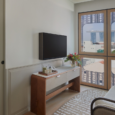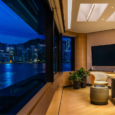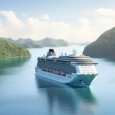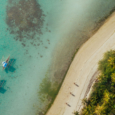Set to open in the second quarter of 2023, the 17-hectare Bird Paradise will be the first of the new wildlife parks located at Mandai Wildlife Reserve to open to the public. Managed by the Mandai Wildlife Group, Singapore’s new bird park – Bird Paradise – will transport visitors into a colorful world that will be the home to 3,500 birds from over 400 avian species. Designed to encourage discovery at every turn, Bird Paradise will welcome visitors into immersive and naturalistic mixed-species habitats, where they will explore eight large walk-through aviaries which reflect different biomes of the world such as dense African rainforests, South American wetlands, Southeast Asian paddy fields, Australian dry eucalypt forests, and more.
By co-locating all of Singapore’s wildlife parks and other nature-based experiences together at the Mandai Wildlife Reserve, it is being positioned as a unique destination for nature and wildlife activities. This will offer more potential for the Bird Paradise, which includes an avian hospital, and the Mandai Wildlife Group’s other operating parks to become leading centers of animal conservation, education, and research.
Mike Barclay, Group CEO of Mandai Wildlife Group said, “When the Mandai Rejuvenation Project was envisioned, we wanted Bird Paradise to exemplify our commitment to operating open, immersive wildlife parks that place animal welfare at the center of what we do. We have designed Bird Paradise to offer guests an array of carefully themed and choreographed walk-through aviaries, that will bring visitors even closer to some of the most stunning bird species in the world. The support facilities are also of the highest standard, including a state-of-the-art avian hospital and an extensive breeding facility. As an organization dedicated to protecting wildlife, I am confident that Bird Paradise will provide us with the perfect platform to further our education programs, capacity-building initiatives, and our important work to protect threatened bird species across the region.”
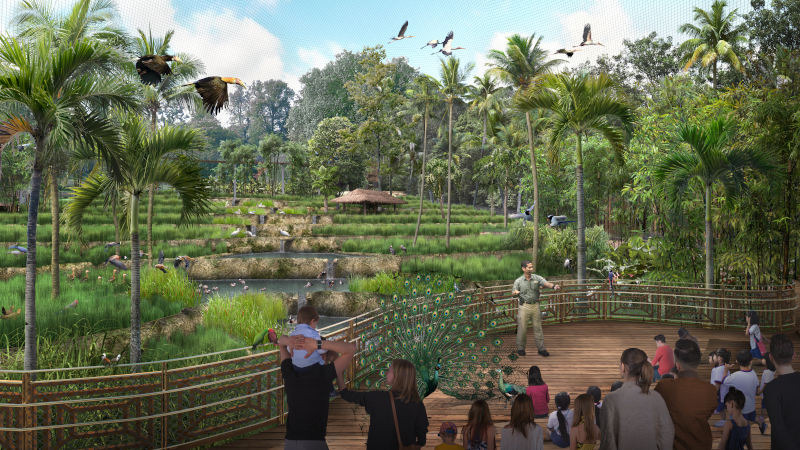
Artists’ illustration of Wings of Asia. Image credit to Mandai Wildlife Group
A fascinating exploration through immersive habitats
The new bird park is designed to emphasize environments inspired by different ecologies and habitats, the natural behaviors of birds, and the unique avian adaptions found across species.
Visitors will be transported to different parts of the world as they wander and explore the large aviaries which reflect the naturalistic ambiance of distinct regions with geographically appropriate features, vegetation, and bird species. The habitats will come to life with the songs and natural behaviors of the birds, from taking flight, to feeding, nesting, or foraging through the undergrowth.
A key highlight is the Heart of Africa where visitors will find themselves in the forested valleys of continental Africa. Featuring an elevated canopy experience, visitors will be led into a dense misty forest with meandering forest streams, where they can observe birds displaying their natural behaviors. A stunning recreation of the tranquil bamboo forests and sloping rice terraces of Southeast Asia can be found at Wings of Asia. The landscaping serves more than just an aesthetic function, with a labyrinth of bamboo providing a major food source for the animals living in the habitat. The terraces also create a unique ecosystem for birds like the critically endangered Baer’s Pochard and endangered Milky Stork.
Over at the Penguin Cove, a state-of-the-art indoor habitat will eventually be home to penguins such as the Gentoo Penguin, King Penguin, Humboldt Penguin, and Northern Rockhopper Penguin. It will offer guests a fascinating look into the oceanic life of these birds.
Guided by the knowledge and experience accumulated from operating the 51-year-old Jurong Bird Park, the new Bird Paradise will continue to preserve the incumbent bird park’s heritage and legacy and pay tribute to Singapore’s pioneer wildlife park by retaining iconic features such as the heliconia collection.
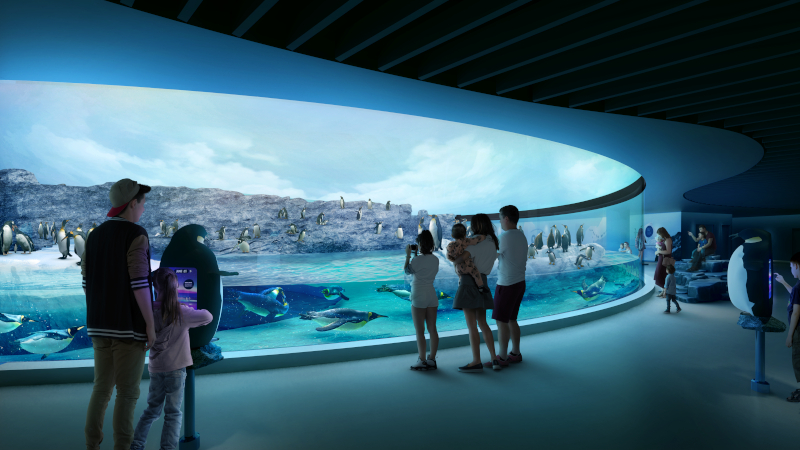
Artists’ illustration of Penguin building. Image credit to Mandai Wildlife Group
At the forefront of avian conservation
Some of the park’s most threatened species will be housed in Winged Sanctuary, a zone specially dedicated to birds of high conservation value including critically endangered species like the Philippine Eagle, Vietnam Pheasant, and Negros Bleeding-heart.
Building on Jurong Bird Park’s ex-situ and in-situ conservation efforts for globally threatened avian species, 24 percent of the species in Bird Paradise will be threatened species, the highest percentage listed under human care in a single zoological park.
The new bird park will also have the world’s largest living genetic reserve of Hornbills under human care, with over 20 species. This includes new species such as the Knobbed Hornbill and Sulawesi Hornbill, offering greater opportunities for research and conservation work. Songbirds from Southeast Asia will also be a key area of focus for conservation at Bird Paradise, with more than half of the species listed as threatened in the wild.
Aligned with the park’s commitment to be a globally recognized hub for avian conservation and research, there will be over 75 ex-situ managed breeding programs represented, as well as several species that are directly linked to field conservation projects in the region.
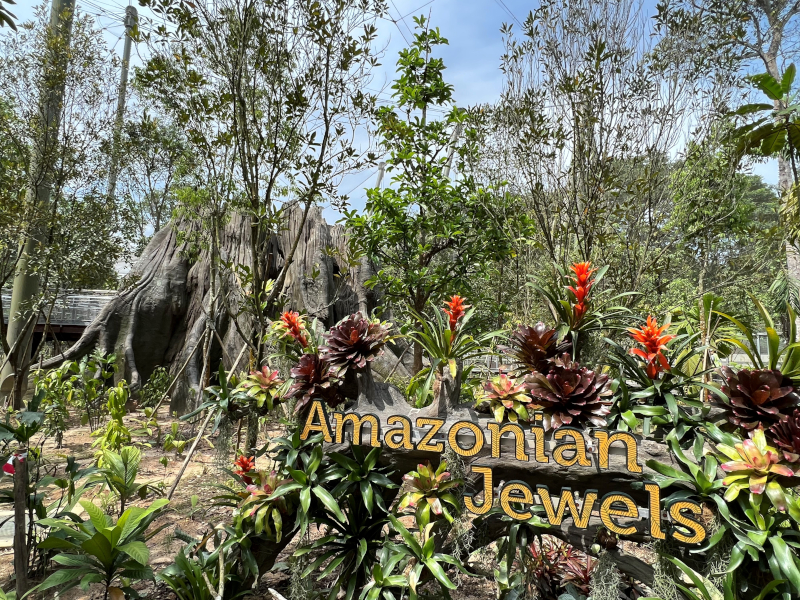
Explore the large buttress root tree created for the Amazonian Jewels, one of the habitats that simulate the South American rainforest. Photo Credit: Mandai Wildlife Group
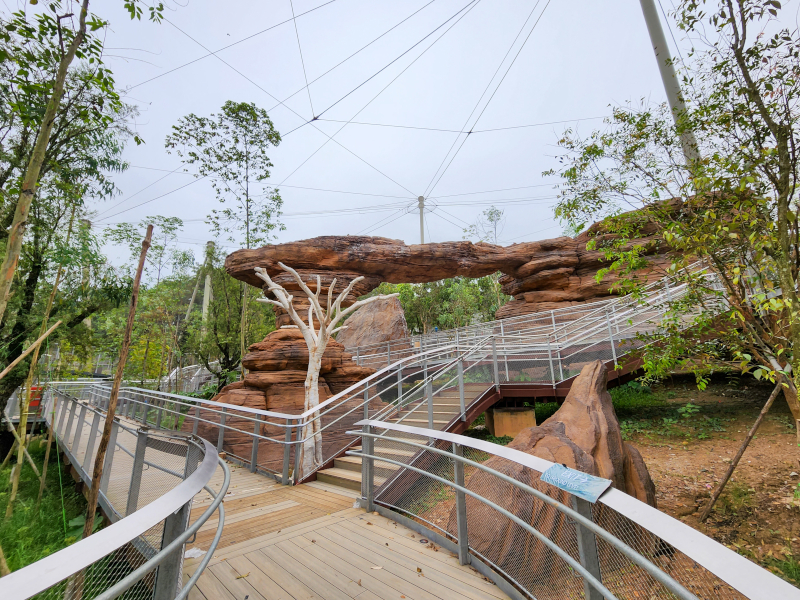
Walk amidst a landscape inspired by the region of Oceania and around, at the Australian Outback habitat. Photo Credit: Mandai Wildlife Group
Integrating conservation education into visitor experiences
Throughout the park, education programs and features such as tactile and digital interactives, bird interactions, and feeding sessions will allow visitors to engage in hands-on and interactive encounters with the birds. Going beyond play, these elements also create awareness among visitors and evoke deeper reflection on the real-life threats faced by the animals in the wild, many of which are at risk of extinction should action not be taken to conserve their habitats.
Every area of the park is designed to ignite the call to action for visitors to do their part in conservation. Transitional zones in between habitats double up as educational spaces where visitors can learn more about avian features and behavioral patterns. Fun and interactive elements will deepen visitors’ appreciation of the avian world, alongside sensorial explorations like human-sized nests, and opportunities to recreate the dawn choruses of Southeast Asian songbirds.
Visitors can embark on meaningful behind-the-scenes tours to Bird Paradise’s fully-equipped Avian Health and Research Centre, Avian Nutrition Centre as well as a Breeding and Research Centre. Through these tours, they will learn about breeding programs as well as how to establish assurance colonies that hedge species in the wild against extinction. They will be exposed to conservation research projects that help to sustain and protect species populations in the wild. A 2,000-seater amphitheater is also set to enchant with free-flying demonstrations and refreshed presentations.
Visitors can also look forward to designated family fun areas at Tree Top Play and Egg Splash for dry and wet play respectively. Treetop Play is inspired by the movement of birds within the tree canopies, while Egg Splash takes inspiration from the eggs of waterbirds to create a fun, playful waterscape for children.
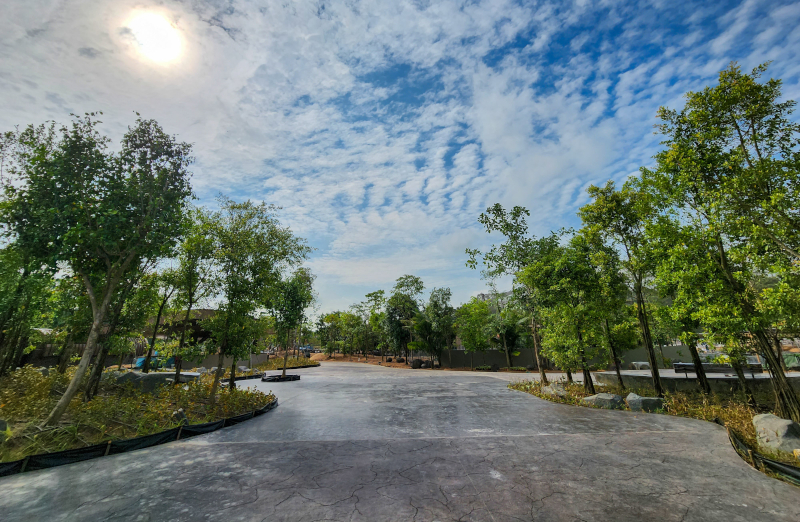
Over 1,400 trees would be planted at the West Arrival Node by October 2022. The West Arrival Node serves as the first gateway for visitors, leading to the new Bird Paradise and Rainforest Wild. It will include play areas, and several F&B options for guests to enjoy. Photo Credit: Mandai Wildlife Group
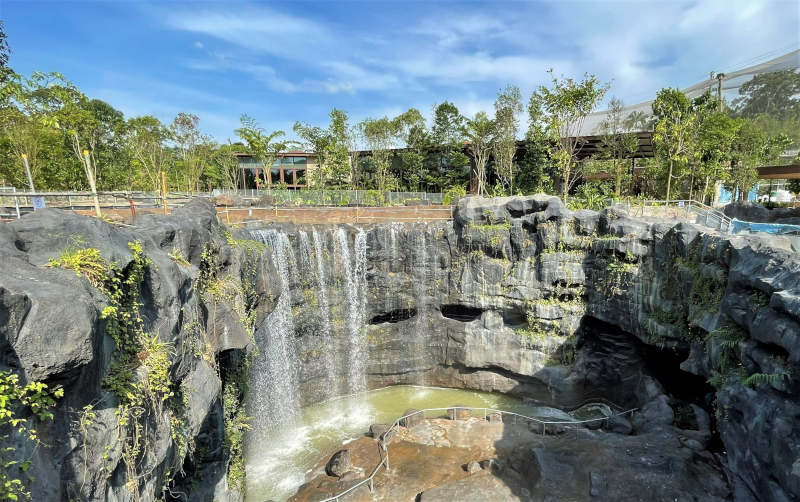
Node where visitors can move about to enjoy recreation activities as well as dining options before or after visiting Bird Paradise. Photo Credit: Mandai Wildlife Group
Incorporating sustainable design
In line with the precinct-wide sustainability efforts for Mandai Wildlife Reserve, Bird Paradise will be applying to be certified under the Landscape Excellence Assessment Framework (LEAF), optimizing the best landscape and sustainability practices throughout its design strategy. This includes implementing solar panels on available roof spaces and incorporating passive design to achieve thermal comfort and avoid glare in large visitor spaces. More than 5,000 trees have also been planted throughout the park to recreate natural habitats and provide shade for visitors while utilizing energy-efficient hybrid ventilation systems to replace air conditioning where possible. For areas where air-conditioning is required, water and energy-saving measures will be implemented, allowing spaces such as Penguin Cove to achieve the Green Mark Platinum for Non-Residential Buildings.
The Great Migration and A Flight To Remember
Preparations for the great migration from Jurong Bird Park to Bird Paradise began more than three years ago, with the Avian team working on the species plan and acquisition strategy for new species. Over the last two years, retheming of existing aviaries such as the African Treetops at Jurong Bird Park was done to mirror the new habitats of Bird Paradise to start introducing different bird species that would be housed in the same habitat at the new park. The move is set to happen after Jurong Bird Park closes and will see all its feathered residents relocated to the new Bird Paradise over a few months.
The work of conditioning the birds for the move has begun, with small conditioning aviaries placed in larger walk-through habitats to encourage the birds to enter voluntarily and be comfortable inside. These conditioning aviaries will be used to transport them safely to the Mandai Wildlife Reserve.
The move is a massive undertaking. An extended planning exercise has identified more than 100 steps that need to be undertaken to complete each transfer. A comprehensive assessment of the entire moving process was conducted, and various mitigation measures have been put in place to ensure the safety and welfare of the birds and the staff involved. Upon release into their new homes, the birds will be closely monitored to ensure they are adjusting well and given sufficient time to settle into their new environments.
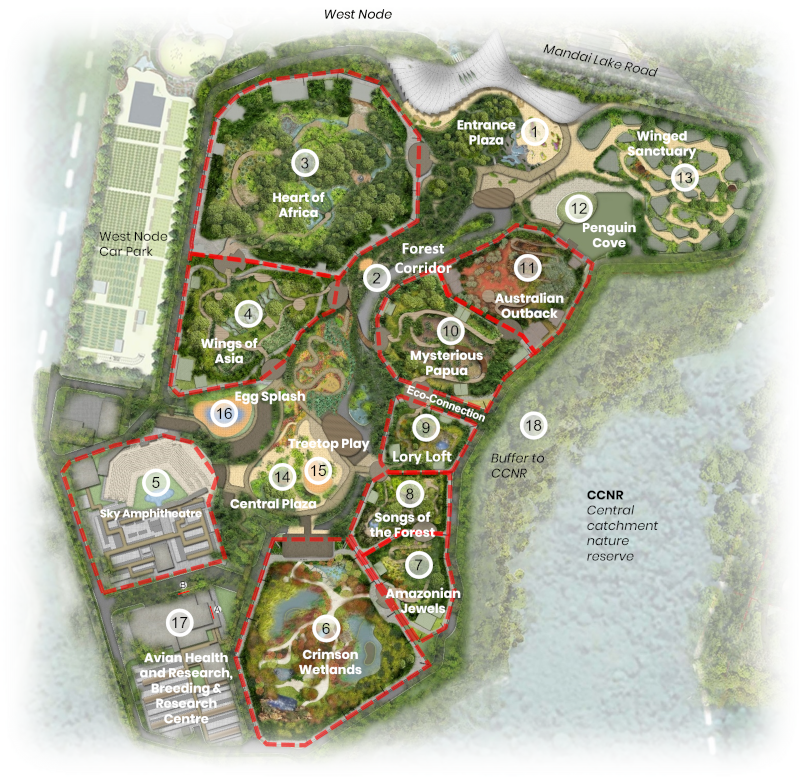
Map of Bird Paradise. Image credit to Mandai Wildlife Group
Jurong Bird Park is currently on its last flight, A Flight To Remember. Following Jurong Bird Park’s official last day of operations on 3 January 2023, the process of moving the avian residents to Bird Paradise will begin.
With Singapore’s new bird park set to open next year, development work for the rest of the precinct is also well underway. The remaining features are set to open progressively through 2025.
Do you have a story for the WhenInManila.com Team? Email us at story.wheninmanila@gmail.com or send us a direct message on WhenInManila.com Facebook Page. Interact with the team and join the WhenInManila.com Community at WIM Squad! We also share our stories on Viber, join us!

